How well electric vehicles (EVs) retain their value depends largely on the specific model and its overall desirability.
Certain EVs are more in demand than others, particularly those that come equipped with cutting-edge technology, advanced features, and superior driving performance.
On the other hand, EVs that are less popular tend to depreciate more rapidly compared to those that maintain their value more effectively.
Overall, electric vehicles experience the steepest depreciation rates among all major vehicle categories.
Slow Depreciation:
Most EVs lose over 49 percent of their value within five years, whereas the average depreciation across the entire automotive industry is under 39 percent after the same period of ownership.
10. Tesla Model 3
Five-Year Depreciation: 53.3-Percent
If it weren’t for the Chevy Bolt, the Tesla Model 3 would have been the first electric compact sedan to feature a long-range battery.
The Model 3 stands out as an appealing option thanks to its practical blend of user-friendly features and enjoyable driving dynamics, especially with the latest “Highland” updates.
Equipped with an 84.6 kWh battery, the Model 3 produces 394 horsepower and 377 lb-ft of torque, offering all-wheel drive, a driving range of 342 miles, and a charging time of 9.4 hours.
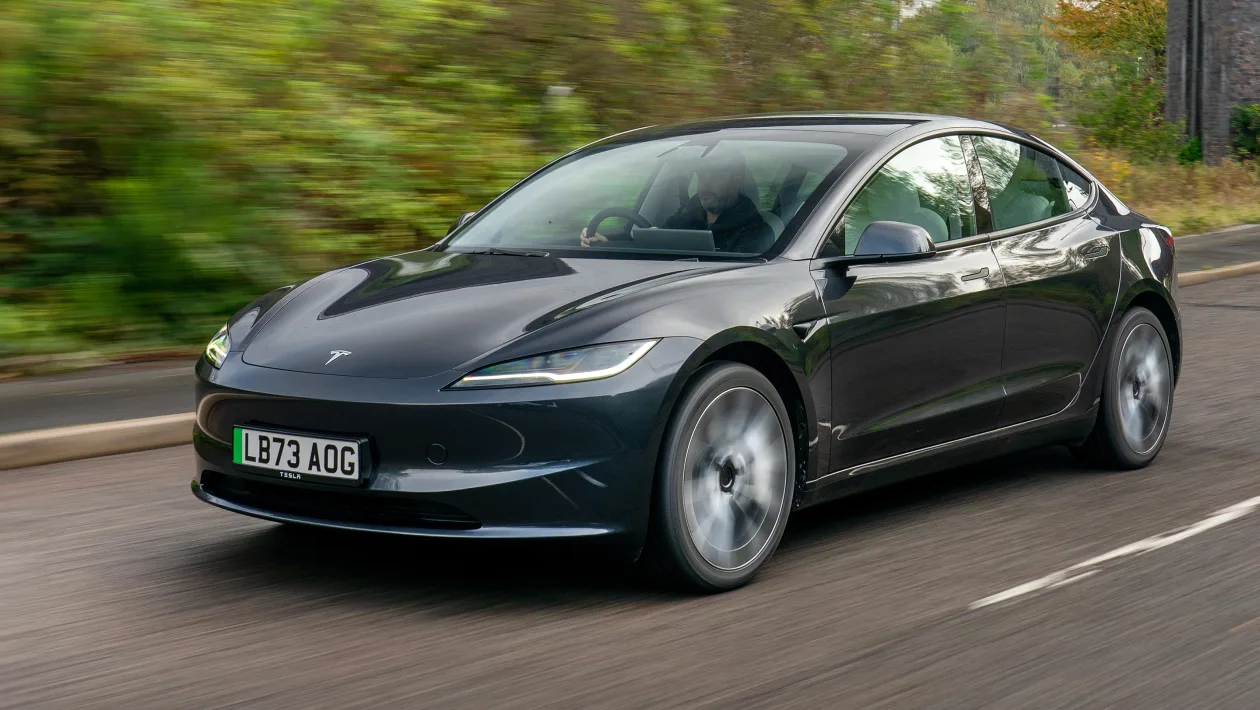
This compact sedan remains one of the most popular electric vehicles in the market due to its strong value retention, high-quality interior materials, smooth ride, and access to Tesla’s expansive and dependable Supercharger network.
Some of its key advantages include excellent driving range, solid performance and handling, comfortable seating, and generous passenger and cargo space.Additionally, the ability to use Tesla’s fast-charging infrastructure adds to its appeal.
However, drawbacks include a touchscreen interface that controls nearly all vehicle functions which can be distracting along with the lack of Android Auto and Apple CarPlay integration, and the unusual omission of traditional turn signal stalks.
Also Read: Top 10 Most Reliable & 5 Least Reliable Diesel Cars
9. Tesla Model X
Five-Year Depreciation: 44.8-Percent
The Tesla Model X continues to hold its value well, positioning itself as one of the top electric SUVs available.
While its upward-swinging rear gullwing doors may be finicky, the Model X offers a compelling package for drivers who appreciate cutting-edge technology and well-rounded features.
Powered by a 100 kWh battery, it delivers 532 horsepower and a whopping 713 lb-ft of torque through an all-wheel-drive system. It has a driving range of 348 miles and a charging time of 14 hours.
For performance enthusiasts, the Plaid version offers an astonishing 1,020 horsepower while maintaining a decent range, but even the base trims provide more than enough excitement and practicality with their rapid acceleration and generous equipment offerings.
Among its top strengths are its powerful and immediate acceleration, impressive electric range, and the availability of three-row seating for larger families or groups.
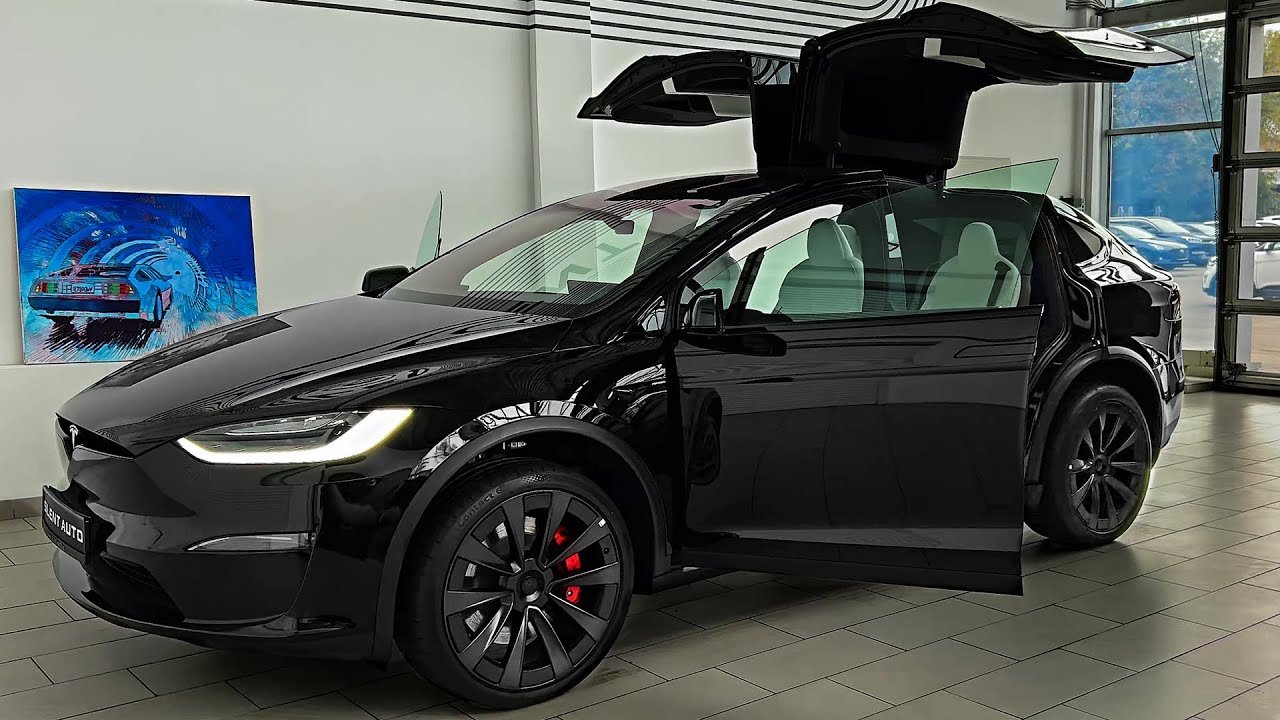
On the downside, the distinctive rear doors can hinder functionality, the expansive windshield allows excessive sunlight and heat into the cabin, and the absence of both Apple CarPlay and Android Auto remains a notable omission.
The Tesla Model X is a fully electric luxury SUV known for its distinctive design, cutting-edge technology, and high performance. Introduced in 2015, the Model X is built on the same platform as the Model S sedan but adds more interior space, a taller profile, and seating for up to seven passengers.
One of its most eye-catching features is the rear “falcon-wing” doors, which open upward rather than outward, providing dramatic styling and improved access to the second and third rows—even in tight parking spaces.
Under the hood—or rather, beneath the floor—Tesla offers the Model X with dual-motor all-wheel drive as standard, delivering impressive acceleration and handling.
The current Long Range version offers an EPA-estimated range of up to around 348 miles on a single charge, while the high-performance Model X Plaid boasts over 1,000 horsepower and can rocket from 0 to 60 mph in just 2.5 seconds, making it one of the quickest SUVs ever built.
The cabin is minimalist and tech-forward, centered around a large 17-inch touchscreen that controls nearly all vehicle functions, from climate and media to navigation and autopilot settings.
A second display is mounted behind the steering wheel to show essential driving data, and a third screen is available for rear passengers.
The Model X also features Tesla’s Autopilot driver-assistance system, with the option to upgrade to Full Self-Driving (FSD) capability, which adds features like automatic lane changes, traffic light and stop sign control, and more (though it still requires driver supervision).
8. Nissan Leaf
Five-Year Depreciation: 44.4-Percent
The Nissan Leaf is recognized as the original modern electric vehicle, known for its compact size that makes it an excellent fit for city driving.
If you’re searching for a small, practical car to navigate tight urban streets, the Leaf is a reliable choice.
One of its key strengths is its ability to retain value well over time, allowing owners to recover a good portion of their investment when it’s time to trade in or sell.
Equipped with a 62 kWh battery, the Leaf delivers 214 horsepower and 250 lb-ft of torque through a front-wheel-drive system. It offers a driving range of 212 miles and takes about 11 hours to fully charge.
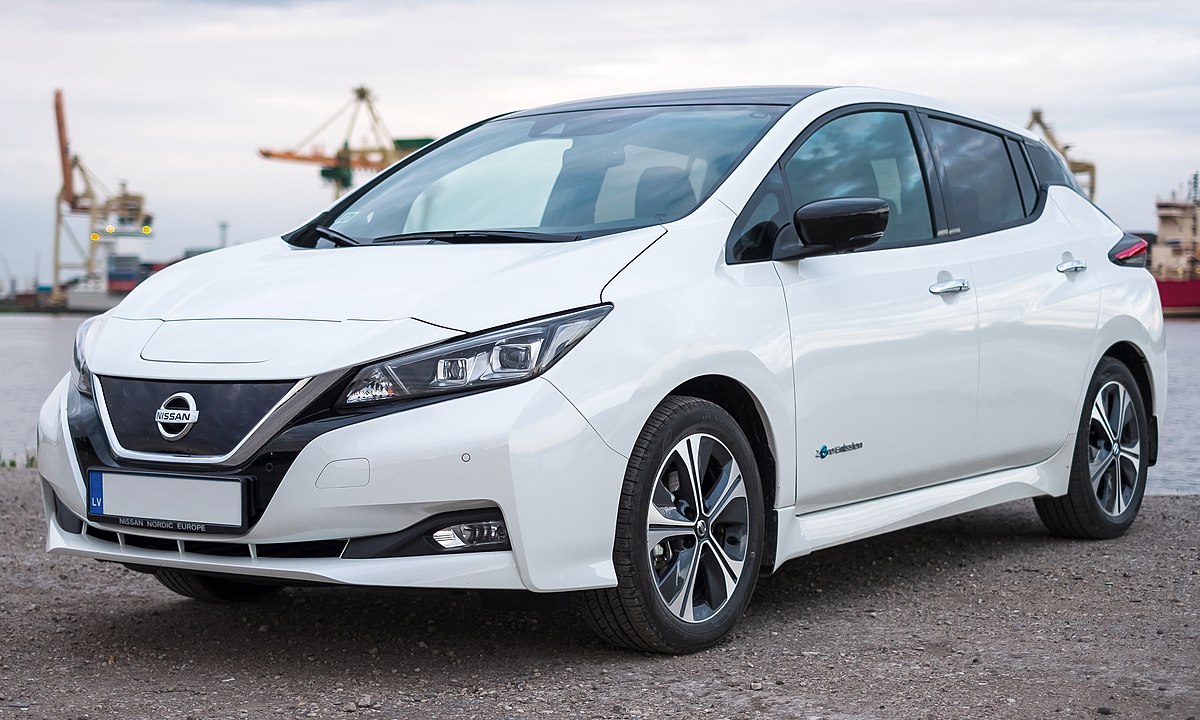
Despite its modest range compared to some other electric vehicles, the Leaf stands out for its affordability, proving that owning an EV doesn’t have to be expensive.
While it’s not built for long road trips, it can easily meet the needs of most daily driving tasks. Some of its biggest advantages include a generous selection of standard driver-assist features, a quiet and comfortable driving experience, and a competitive price.
However, it does have a few limitations such as minimal small-item storage, rear seats that don’t fold flat, and a shorter driving range than many of its EV competitors.
7. Chevrolet Bolt EV
Five-Year Depreciation: 42.4-Percent
Although there was no 2024 model year for the Chevrolet Bolt EV, the 2023 version is still expected to hold its value well over the next five years.
This compact electric hatchback made a strong impression on the EV market by offering a compelling mix of affordability and driving enjoyment.
Instead of releasing multiple trims and powertrains, Chevrolet designed the Bolt EV with a single, efficient powertrain that balances practicality and performance.
The vehicle features a 65 kWh battery, generating 200 horsepower and 266 lb-ft of torque, with front-wheel drive. It offers a driving range of 259 miles and can be fully charged in 7.5 hours.
The Bolt is especially appealing to drivers who want a reliable EV that can handle both city and highway driving without breaking the bank.
Among its standout qualities are its excellent overall value, a spacious cabin that comfortably fits passengers, and great outward visibility.
However, it’s not without its drawbacks the ride can become bumpy on rough roads, its DC fast-charging capabilities are relatively slow, and the cargo area is smaller than expected for a hatchback.
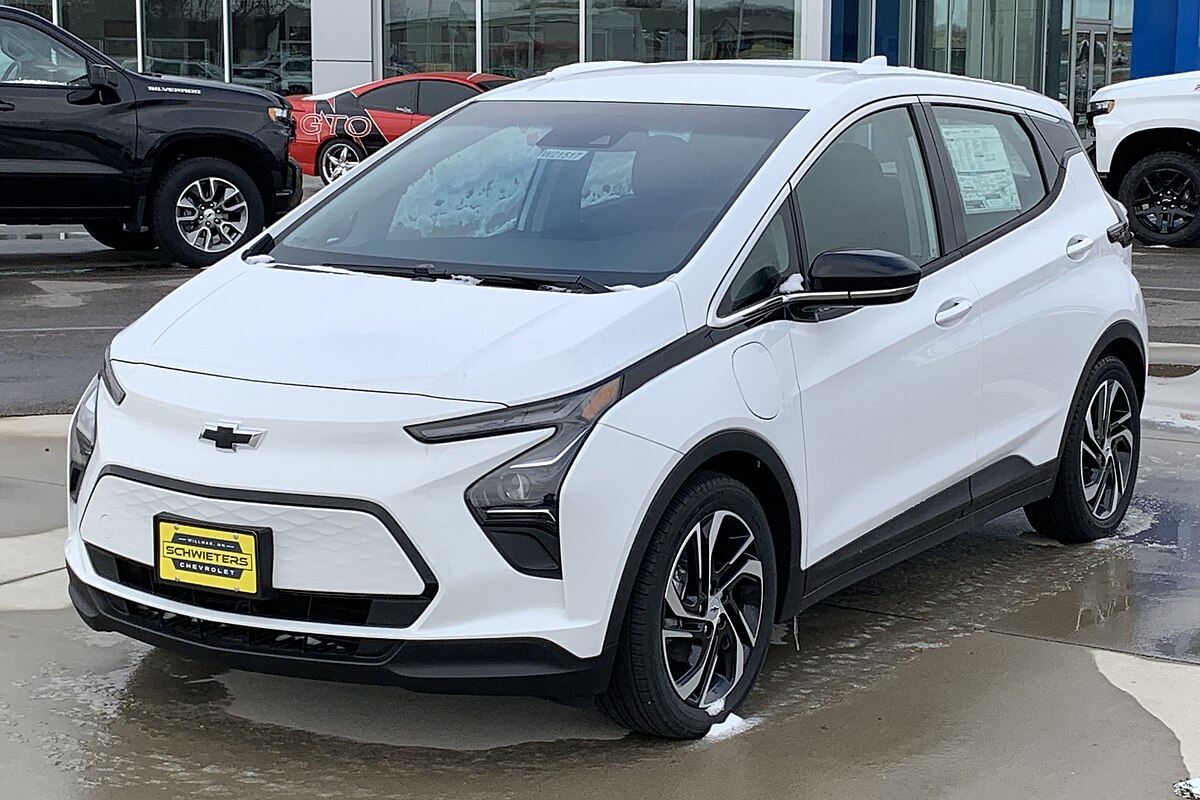
The Chevrolet Bolt EV is a compact, fully electric hatchback that has played a significant role in making electric vehicles (EVs) more accessible and affordable since its debut in 2017.
Developed in collaboration with LG Corporation, the Bolt EV was General Motors’ first mass-market EV, offering a practical alternative to more expensive electric cars.
Powered by a 200-horsepower permanent magnet electric motor delivering 266 lb-ft of torque, the Bolt EV provides brisk acceleration and a smooth driving experience.
Its 66.0 kWh lithium-ion battery pack offers an EPA-estimated range of 259 miles, making it suitable for daily commutes and longer trips without frequent charging stops.
The vehicle supports various charging options, including standard 120V and 240V AC charging, as well as DC fast charging via the SAE Combo connector, allowing for flexible and convenient recharging.
In terms of design, the Bolt EV features a spacious five-door hatchback layout with a high roofline, providing ample headroom and cargo space. The interior is equipped with a 10.2-inch touchscreen infotainment system, offering intuitive access to navigation, media, and vehicle settings.
Advanced safety features, such as automatic emergency braking, lane-keeping assist, and a rearview camera, contribute to the Bolt EV’s appeal as a family-friendly vehicle.
Also Read: Top 10 Worst and 10 Best Trucks for Towing
6. Tesla Model S
Five-Year Depreciation: 40.5-Percent
Even though Tesla has shifted much of its attention to the futuristic Cybertruck, the Model S remains a standout electric vehicle and continues to serve as the flagship sedan of the brand.
This sophisticated and powerful EV has proven its value over time, maintaining strong market presence and retaining its worth impressively well.
The Tesla Model S features a 99.3 kWh battery, an astonishing 1,020 horsepower, and 1,050 lb-ft of torque, all delivered through an all-wheel-drive system.
It boasts a driving range of 359 miles and requires around 15 hours for a full charge. The Plaid trim is the most sought-after variant of the Model S, offering blistering speed and unmatched acceleration that leaves a lasting impression.
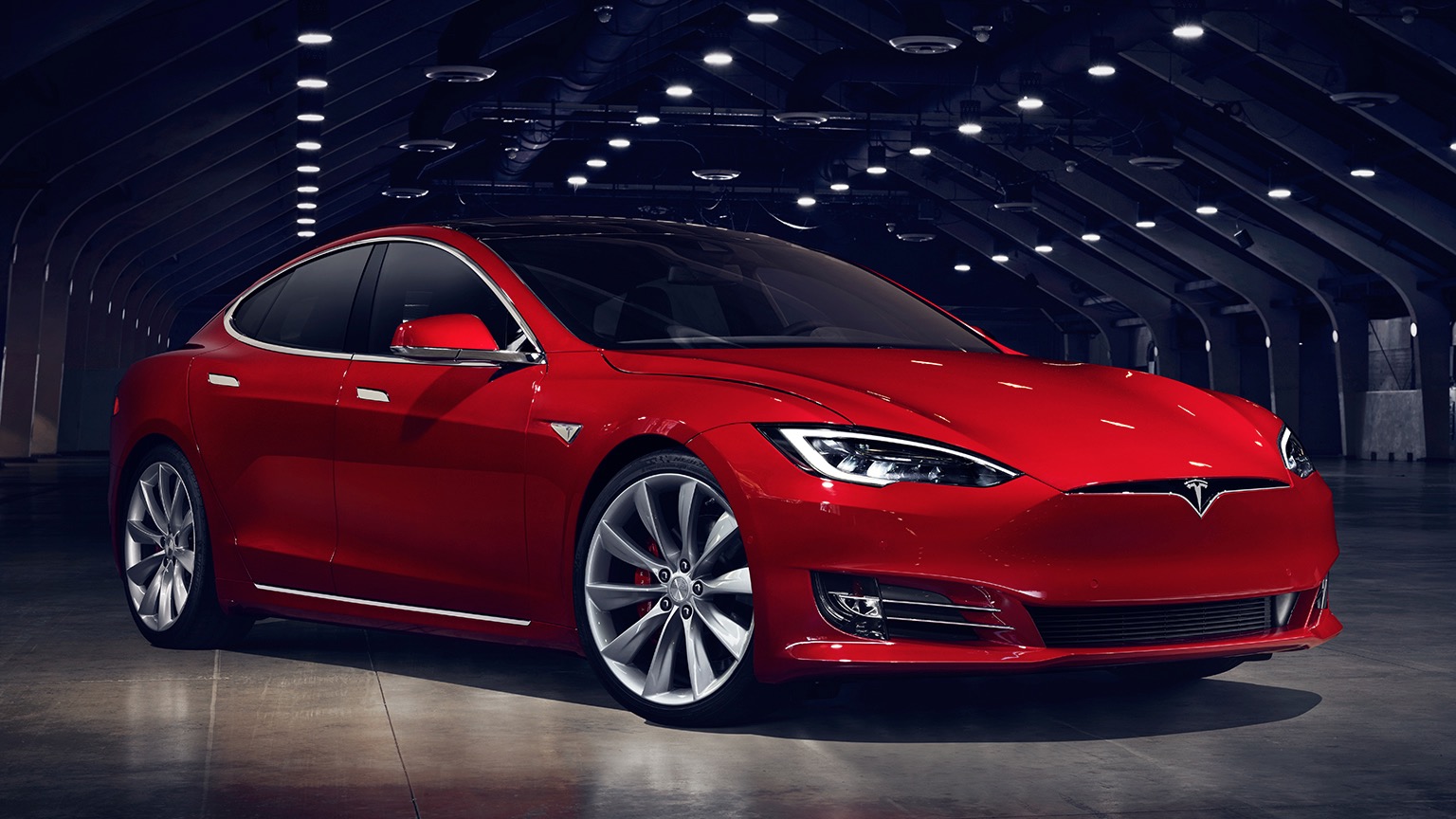
This luxury sedan was the pioneer of long-range electric vehicles, and it continues to be one of the top models available today.
Its main strengths include an exceptional electric driving range, thrilling acceleration across all trims, and a practical liftback design that opens up generous cargo space.
However, the interior finish isn’t as upscale as what you’d find in other sedans at a similar price point.
In addition, it lacks Apple CarPlay and Android Auto integration, and the limited selection of paint colors and personalization options from the factory may leave some buyers wanting more.
Fast Depreciation:
5. Mercedes-Benz EQS
One-Year Depreciation: 47.8-Percent
The Mercedes-Benz EQS stands out as one of the most luxurious and advanced electric sedans on the market, but it also experiences one of the highest depreciation rates.
Despite its rapid loss in value, this high-end EV offers so much in terms of luxury, technology, and comfort that most owners aren’t likely to consider trading or selling it anytime soon.
It’s built for long-term enjoyment, packed with desirable features that enhance every drive. The EQS comes with a 108.4 kWh battery, generating 355 horsepower and 590 lb-ft of torque through a rear-wheel-drive system.
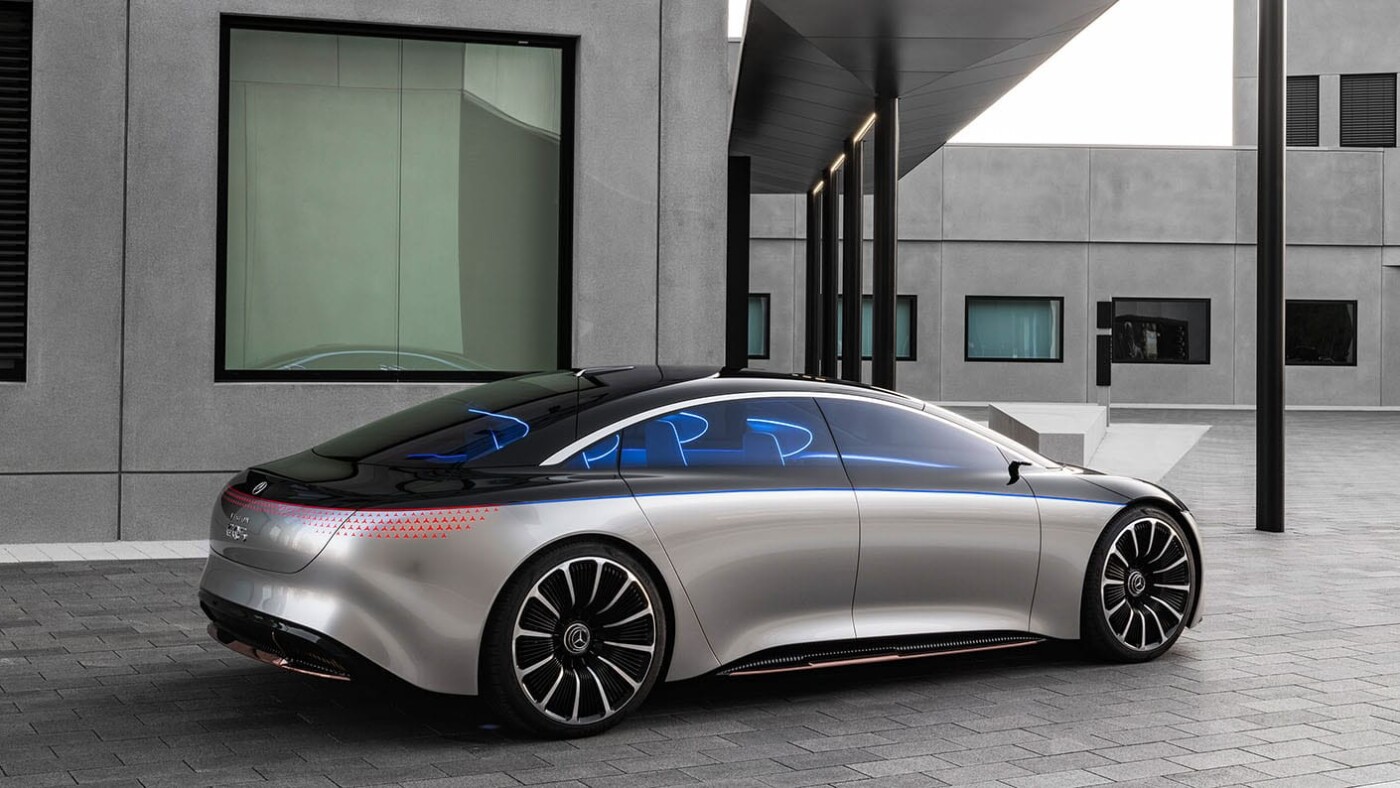
It offers an impressive driving range of 352 miles and can be fully charged in about 12.5 hours. Inside, the EQS features an awe-inspiring digital space, most notably highlighted by the massive 56.0-inch glass-panel Hyperscreen that stretches across the entire dashboard.
Paired with some of the most luxurious and comfortable seats in the industry, the cabin creates a serene and immersive experience for the driver and passengers.
Among its best qualities are a strong real-world electric range, a generous list of standard features and cutting-edge in-car technology, and an elegant, well-crafted interior.
However, there are some downsides, such as a surprisingly cramped rear passenger area considering the vehicle’s size, a higher price tag compared to some rivals without the added performance, and subpar urban driving dynamics that may disappoint in city environments.
4. Kia EV6
One-Year Depreciation: 33.6-Percent
For drivers seeking an electric SUV that delivers true driving enjoyment, the Kia EV6 stands out as a top contender.
Although it experiences fast depreciation, the EV6 offers such an engaging and well-rounded driving experience that it’s the kind of vehicle you’ll want to hold on to for several years.
Kia has packed this SUV with features and capabilities that make it a joy to drive, no matter the road.
Under the hood, the EV6 comes equipped with a 77.4 kWh battery, producing 320 horsepower and 446 lb-ft of torque, with power sent to all four wheels through an all-wheel-drive system.
It delivers a driving range of 282 miles and can be fully charged in about 8.4 hours. The EV6 strikes a fine balance between comfort, performance, and practicality.
Whether you’re taking it on long drives or simply navigating city streets, it offers a pleasant ride, impressive handling, and a spacious interior.
It also includes a high-performance GT variant for thrill-seekers, along with multiple configurations that emphasize range and everyday usability.
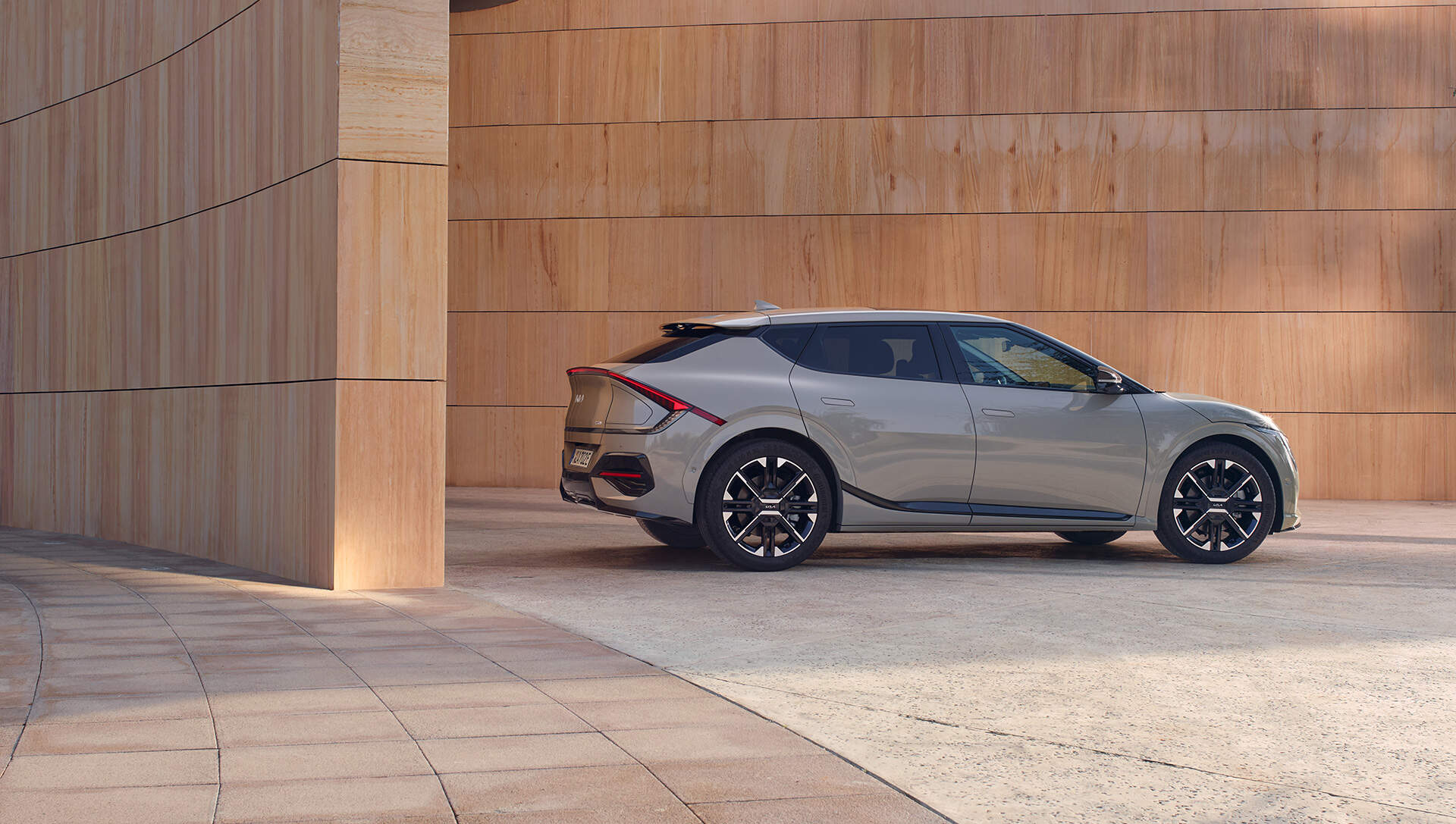
Among its advantages are quick acceleration, sporty dynamics, a roomy cabin for passengers in both rows, and compatibility with the latest high-speed charging networks.
However, it’s not perfect the EV6 falls short in maximum cargo capacity compared to some other electric SUVs, has limited front and rear visibility, and some of its driver-assist systems could use refinement for smoother operation.
The 2025 Kia EV6 is a standout in the electric vehicle segment, offering a blend of performance, design, and technology. This model year introduces a refreshed exterior with the “Star Map” lighting design, giving the EV6 a more modern and distinctive appearance.
The front bumper has been redesigned with sharper angles, and the rear features a wing-shaped bumper, enhancing its sporty look. Under the hood, the EV6 offers multiple powertrain options. The base “Light” trim comes with a 63-kWh battery and rear-wheel drive, producing 167 horsepower.
The “Light Long Range,” “Wind,” and “GT-Line” trims are equipped with a larger 84-kWh battery, delivering up to 225 horsepower with rear-wheel drive and 320 horsepower with all-wheel drive. For those seeking high performance, the EV6 GT model boasts 576 horsepower, accelerating from 0 to 60 mph in just 3.2 seconds.
Inside, the 2025 EV6 features a dual 12.3-inch curved display, providing a seamless interface for both the instrument cluster and infotainment system.
The updated center console and D-shaped steering wheel contribute to its high-tech, sporty aesthetic . Additionally, all trims now offer wireless Apple CarPlay and Android Auto integration .
3. Hyundai Ioniq 5
One-Year Depreciation: 32.9-Percent
The Hyundai Ioniq 5 sets itself apart in the EV market by embracing a distinct, bold design that confidently stands out from the crowd.
Even though it depreciates rapidly, this electric SUV offers plenty of reasons to love it. If you’re looking for a stylish, user-friendly EV that brings fun to your daily drive without taking itself too seriously, the Ioniq 5 is a fantastic option.
Its most common powertrain includes a 77.4 kWh battery paired with a rear-wheel-drive setup, delivering 225 horsepower and 258 lb-ft of torque.
The Ioniq 5 achieves a driving range of 303 miles and takes approximately 8.5 hours to reach a full charge. The SEL trim is the ideal version for drivers who want to maximize performance and features.
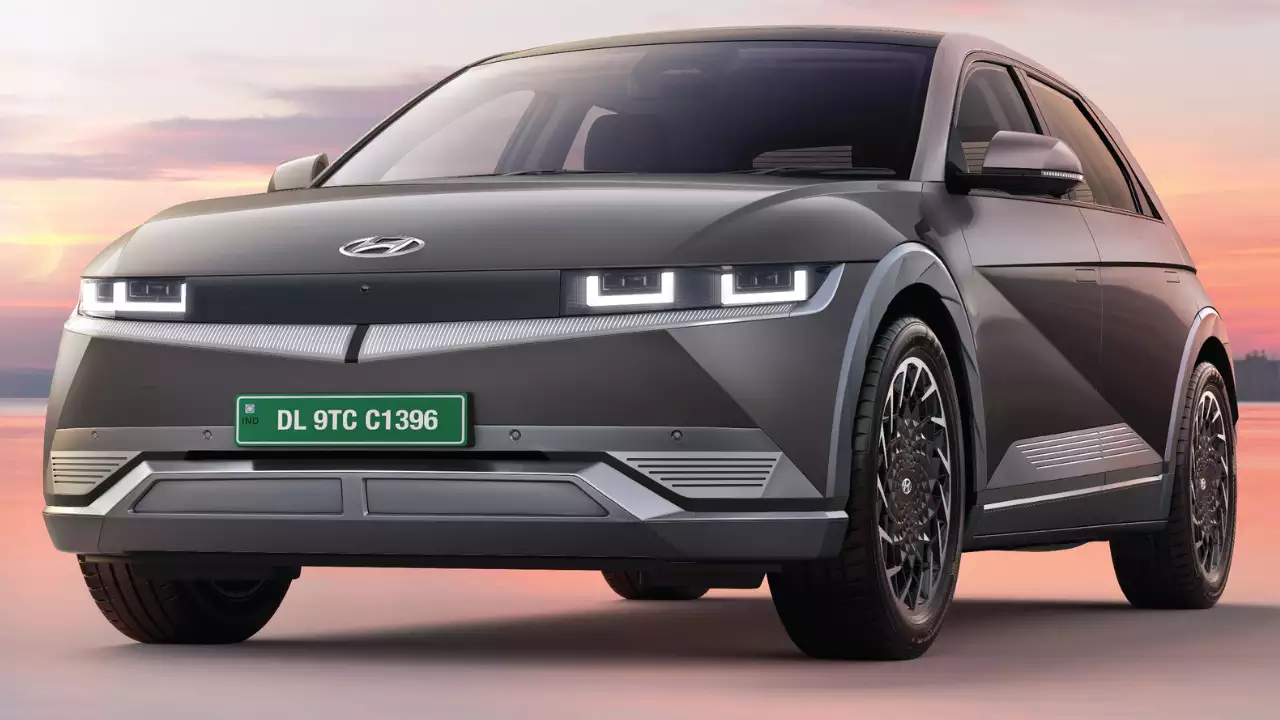
It includes thoughtful touches such as a heated steering wheel, an auto-dimming rearview mirror, and front and rear parking sensors for added convenience.
The Ioniq 5 excels in providing a quiet, comfortable ride with a cabin that’s both functional and intuitive. It also benefits from ultra-fast charging capabilities, allowing for shorter stops on longer trips.
On the downside, the thick rear roof pillars can limit rearward visibility, the cargo capacity is smaller than what’s typically expected in this segment, and it lacks wireless support for both Android Auto and Apple CarPlay, which can be a drawback for tech-savvy drivers.
The Hyundai Ioniq 5 is a standout in the electric vehicle (EV) market, blending retro-inspired design with cutting-edge technology. As Hyundai’s first model built on the dedicated Electric-Global Modular Platform (E-GMP), the Ioniq 5 offers a spacious interior, advanced features, and impressive performance.
For the 2025 model year, the Ioniq 5 introduces several enhancements. Notably, it becomes one of the first non-Tesla vehicles to feature the North American Charging Standard (NACS) port, allowing direct access to Tesla Superchargers without the need for adapters. Hyundai also provides a dongle for compatibility with Combined Charging System (CCS) plugs.
Battery capacities have increased, with Standard Range models now equipped with a 63.0 kWh battery (up from 58.0 kWh) and Long Range models featuring an 84.0 kWh battery (up from 77.4 kWh). These upgrades aim to extend the driving range to over 240 miles for Standard Range and over 310 miles for Long Range rear-wheel-drive configurations.
2. Volkswagen ID.4
One-Year Depreciation: 32.9-Percent
The Volkswagen ID.4 brings a sense of comfort and familiarity while offering the distinctive experience you’d expect from a brand that often takes a different approach.
As one of the earliest mainstream electric SUVs to make its way into the market, the ID.4 helped set the stage for other electric models in its class.
The base version is equipped with a 62.0 kWh battery, producing 201 horsepower and 229 lb-ft of torque, sent to the rear wheels. It offers a driving range of 206 miles and requires about 6.0 hours to fully recharge.
While the smaller battery pack remains the most popular option, Volkswagen also offers the ID.4 with a larger battery.Choosing the upgraded pack provides more power, greater range, and the option of all-wheel drive, appealing to a wider range of drivers.
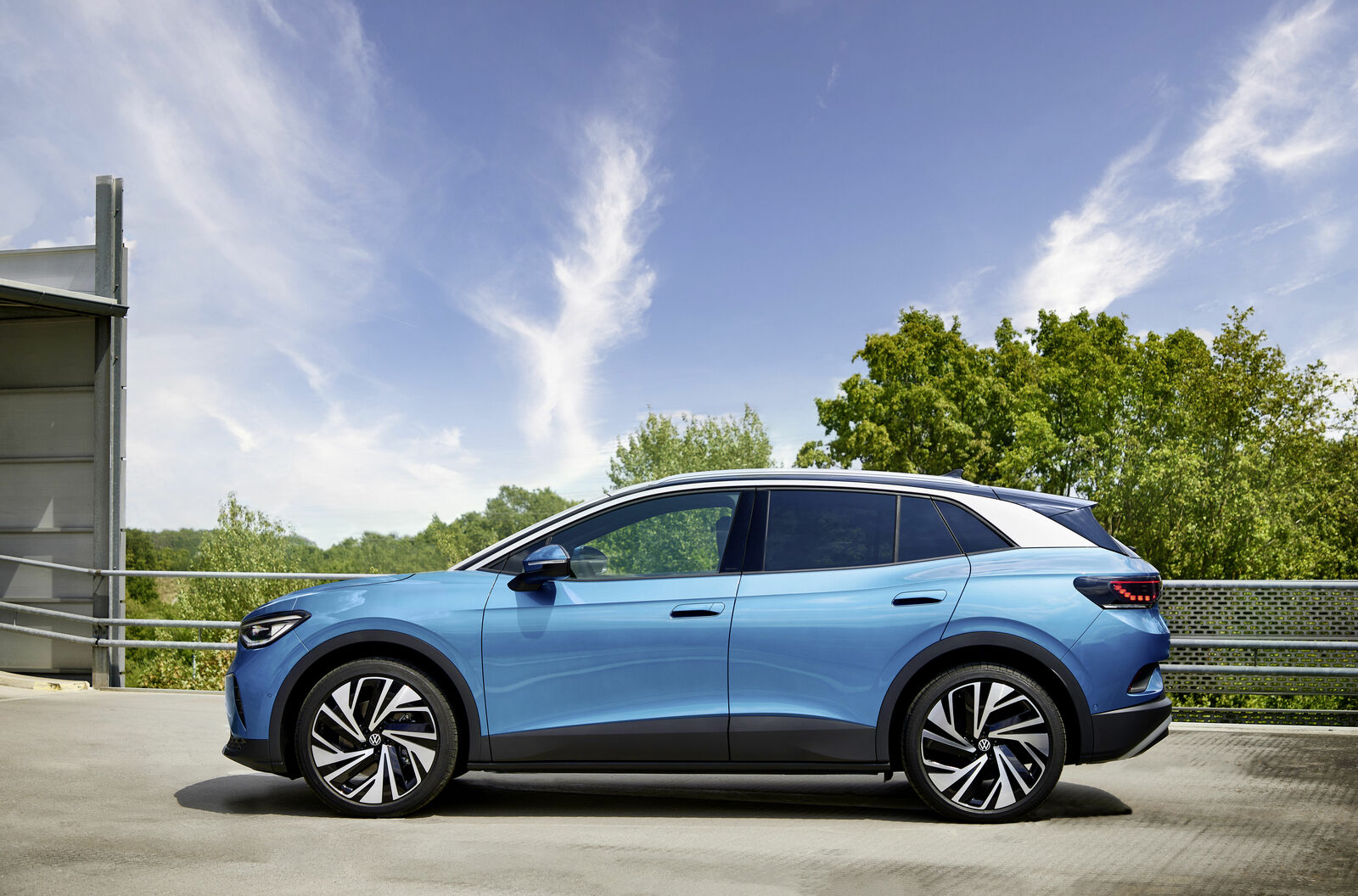
Inside, most trims are outfitted with a sizable 12.9-inch infotainment display that adds to the modern feel of the cabin. Standard features are generous, with numerous driver-assistance and technology systems included across the lineup.
The ID.4 delivers a smooth ride and boasts a spacious cabin that makes it practical for daily use. Its compact turning radius also makes it easy to maneuver in tight spaces and execute U-turns with confidence.
However, some of the controls inside the vehicle can be tricky to use, and the presence of lower-quality plastics in certain areas detracts slightly from the overall experience.
While it excels in comfort and utility, the ID.4 doesn’t deliver the same sporty drive feel found in many rival electric vehicles.
1. Ford Mustang Mach-E
One-Year Depreciation: 29.8-Percent
Among electric vehicles that have only been on the road for a year, the Ford Mustang Mach-E leads in depreciation, dropping nearly 30 percent in value.
Still, this might not be a dealbreaker for those drawn to the Mach-E’s blend of practicality, performance, and tech. It’s a versatile electric SUV that channels the spirit of the classic Mustang in a modern, electrified package.
The Mach-E typically comes with a 72.0 kWh battery, delivering 311 horsepower and 427 lb-ft of torque through an all-wheel-drive system. With a range of 290 miles and a full charging time of 10.0 hours, this EV offers both performance and usability.
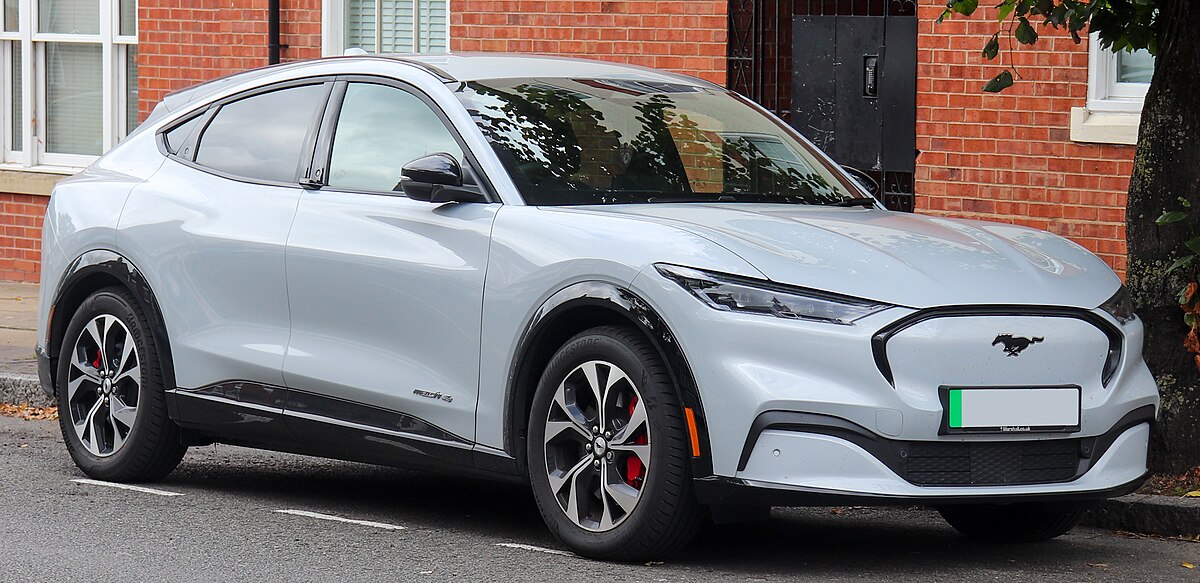
Bearing the Mustang badge, the Mach-E had high expectations to meet and it has largely succeeded. In some configurations, this electric SUV can even outpace the original Mustang muscle car, which may seem surprising but reflects the advantages of electric powertrains.
The Mach-E impresses with sporty handling and quick acceleration, especially in the high-performance GT model. Drivers will also appreciate the user-friendly central touchscreen and ample range available with the larger battery.
However, the front seats offer limited adjustment options, which may affect comfort for some. The ride can also feel rough on uneven pavement, and despite its strong performance, some may find it doesn’t fully capture the thrill of the traditional muscle car experience.

